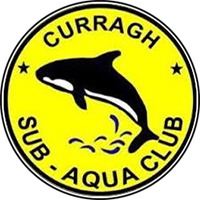Late 2017, the dive season is over, and I am thinking about doing a wreck trip at some point. Scapa flow pops into my mind, it usually does in fairness and I think not in 2018 but maybe 2019 it will be the 100th anniversary of the scuttling, great time to dive in Scapa Flow. I had been twice before, but not since 2009.
For anyone unfamiliar with Scapa Flow, it is a body of water in the Orkney Islands, Scotland, sheltered by the islands of Mainland, Graemsay, Burray, South Ronaldsay and Hoy. Its sheltered waters have played an important role in travel, trade and conflict throughout the centuries.
Following the German defeat in the First World War, 74 ships of the Imperial German Navy’s High Seas Fleet were interned in Gutter Sound at Scapa Flow pending a decision on their future in the peace Treaty of Versailles.
On 21 June 1919, after seven months of waiting, German Rear Admiral Von Reuter made the decision to scuttle the fleet because the negotiation period for the treaty had lapsed with no word of a settlement. He was not kept informed that there had been a last-minute extension to finalise the details.
After waiting for the bulk of the British fleet to leave on exercises, he gave the order ‘Paragraph Eleven – Confirm’ to scuttle the ships to prevent their falling into British hands. The Royal Navy made desperate efforts to board the ships to prevent the sinking’s, but the German crews had spent the idle months preparing for the order, welding bulkhead doors open, laying charges in vulnerable parts of the ships, and quietly dropping important keys and tools overboard so valves could not be shut.
The Royal Navy managed to reach some ships but the vast bulk of the High Seas Fleet, were sunk. Nine German sailors died when British forces opened fire, reputedly the last casualties of the war. If you pick up any dive guide that lists the “Best Dives in the World” you will always find Scapa Flow mentioned. So the decision was made and the planning began…
Headed to Stromness

…In Dec 2017 I reached out to the club to see if anyone would be interested in going to Scapa flow in 2019. In no time at all I had a list of interested divers and started to enquire about a charter boat. Now for anyone familiar with the Red Sea Diving boats, let me tell you the Scapa Flow charters are the other end of the scale when it comes to luxury. Most are converted fishing trawlers. The one we settled on was the MV Valhalla which had excellent reviews and great comments about the food.
Right, divers lined up, boat booked, what next? Oh, yea we have to get there. Now getting to the top of Scotland is a bit of a road trip. After looking at prices of different options including flying we decided that we would take a drive! Now getting to the top of Scotland and over to the Orkneys required traveling almost 900 Km by Car and two ferries, but its handy having your car and when you’re an Extended Range or Advanced Nitrox diver and have several cylinders.
Travel arrangements were made, car-pooling agreed and ferries booked.
We left in a staggered convoy of 4 cars and set off – For the Friday crew we drove up to Belfast and waited to board the 7:30pm Ferry. Jean and Steve had left the week before and were touring around Scotland. Dan, Mark and Dave had got up at some ungodly hour and got the early morning Ferry. Colin, Michelle, Laura and Andy travelled on the same ferry as us. An overnight stay in Ayr, in which I tried to introduce Colm to some Scottish culture (Irn-Bru) he was not impressed.
Up early the next morning and another 7-hour drive took us to Thurso via a quick visit to John O’Groats to make our mark. One more ferry trip and we had arrived in Stromness. We unloaded all of our gear and checked into our home for the week, the MV Valhalla.
The M.V. Valhalla
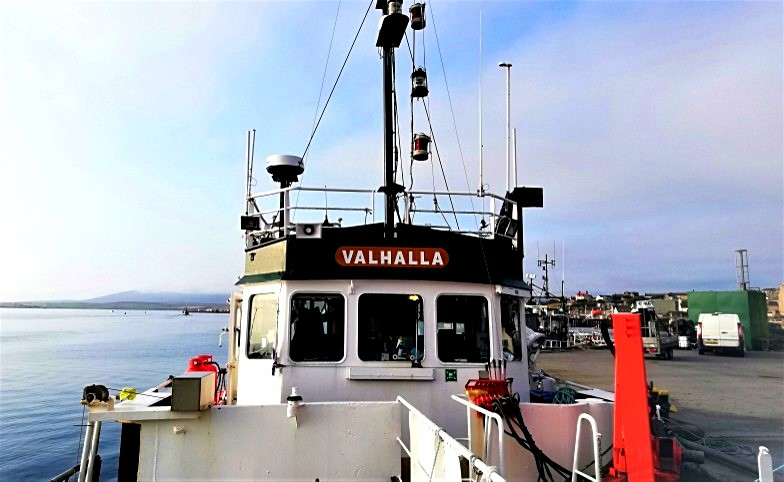
The M.V. Valhalla was a converted trawler and very comfortable with all of the safety equipment needed aboard. Crewed by skipper Hazel, deckhand Vasco and chef Paddy they made our stay very comfortable indeed. As we kitted up and got ready to dive we were even offered the chance to warm our hoods and gloves in a bucket of hot water… Curragh take note! After each dive we were also met with a soft refreshment of our choice, from tea’s and coffee’s to juices, a nice little touch. Below decks the quarters were comfortable and had she had everything we needed for make it a great trip.
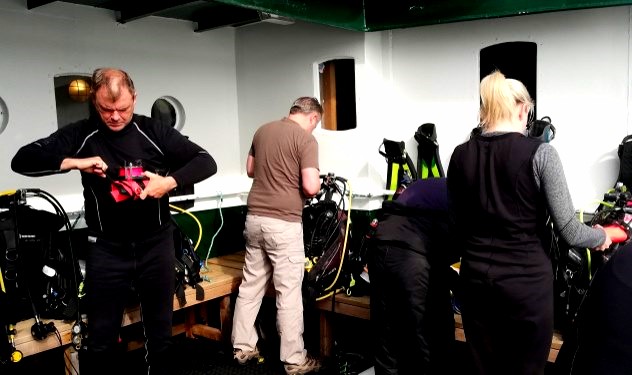
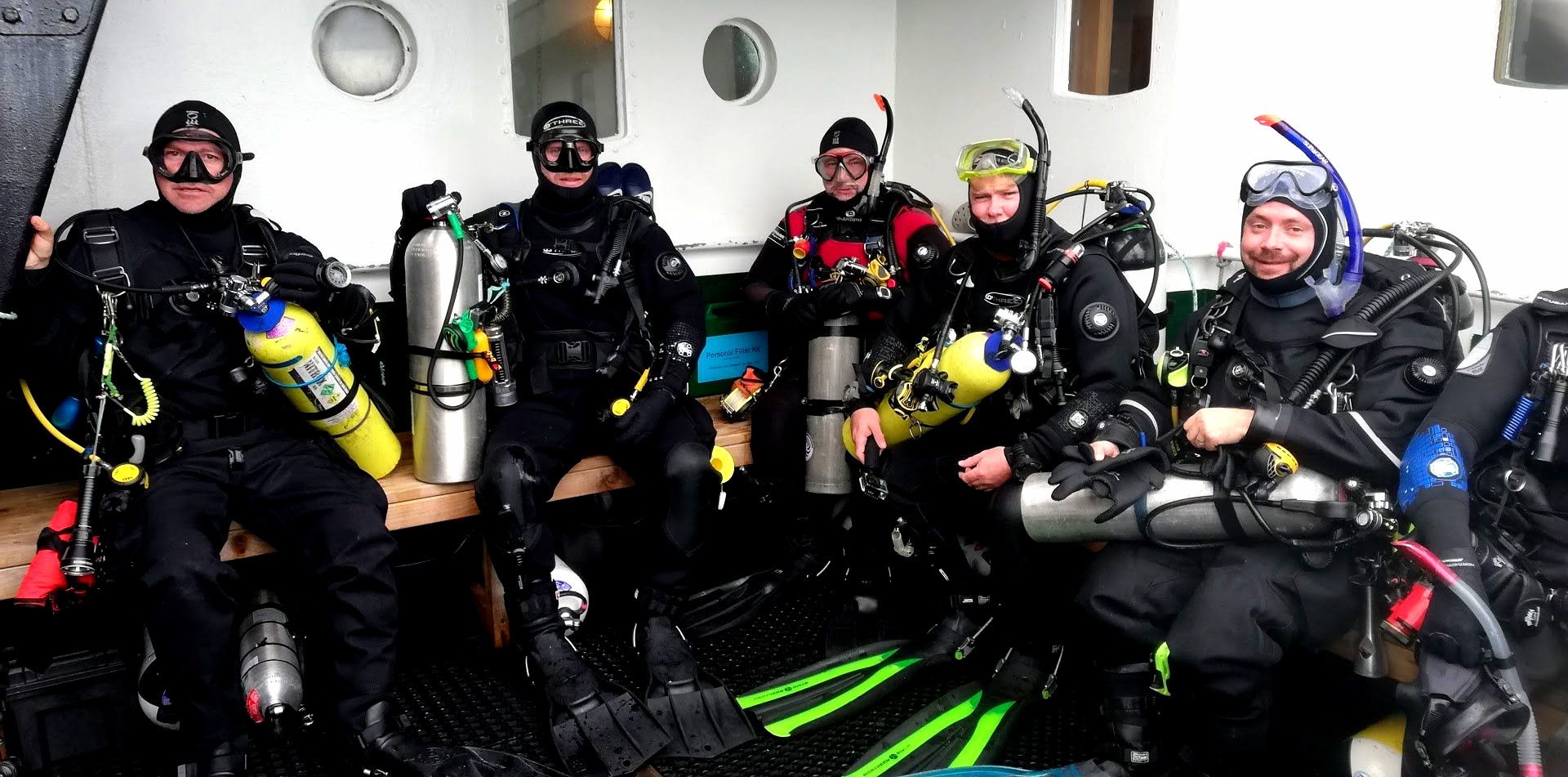
The Wrecks of the German High Seas Fleet
Day 1 – Shake down day
Hazel our Skipper gave us a briefing the next morning. For our first dive we would dive on the SMS Karlsruhe a cruiser lying in 25 meters on her starboard side. This is the most broken up cruiser in Scapa Flow but still has a lot to offer, divers can see her armoured control tower, two anchor capstans and two 5.9inch Guns
Our second dive is on the F2. Nice shallow dive this and an ideal second dive. F2 was built by Germaniawerft at Kiel and completed in 1936 as a Geleiteboot (escort boat), the second built out of a class of ten. Her design was experimental as it incorporated high-pressure boilers. In the end this proved problematic and the F2 made a poor sea boat. She was interned in 1945 at the end of the war and sank in a storm in 1946. A salvage barge lies nearby which was lost in 1968.
When you do the dive now you start on the Barge and see the anti-aircraft guns from the F2 in the hold of the barge. There is a line connecting the F2 with the YC21. The F2 was extensively salvaged from the Bridge aft and is a large scrap field. The Bow is nice to see and the forward gun is still in place. Max depth was about 16 meters
After each dive, our very own chef brought each of us our preferred own hot drink as we de-kitted. Paddy the Chef cooked a hot lunch and dinner, each day. The food was all home cooked and nice. First day over we went for refreshments this time we tried the Stromness Hotel, nice retro decorations (or maybe not decorated since the 60s who knows) We found a nice spot up by the windows and proceeded to put the world to rights once more.
Day 2 – Cruiser Day

Continental breakfast eaten, Hazel the skipper gave us our Dive Brief and we would be diving on two Cruisers the Brummer and Dresden.
The SMS Brummer was a mine-laying cruiser designed for speed. Today the ship lies on her starboard side in 36 metres of water with much of her arsenal on the seafloor. The Brummer is a favourite with many as it was left largely intact from salvagers. Though I noticed how much she had collapsed since the last time I dived her in 2009. More guns and Control tower. The forward deck is starting to peel off.
More tea and Lunch before the second dive on the SMS Dresden. The SMS Dresden was launched in 1917 and commissioned into service with the High Seas Fleet in 1918. The Dresden is a unique dive within Scapa Flow thanks to the ship coming to rest both on its port side and on an incline. The northward- facing bow sits at a depth of 25 metres and the ship slopes south towards the stern at 38 metres.
Diving finished we decided to go for a walk and spend some quality time in the dive shop! T-Shirts hats and other essentials were bought, and we retired for refreshments.
Day 3 – Battleship Day
Breakfast and brief completed we headed for our first dive of the day. Today we would dive our first of the three battleships. The SMS Kronprinz Wilhelm was laid down in Kiel in 1911, launched in February 1914 and commissioned in August of that year. She is famous for shelling Great Yarmouth along the east coast of England and taking part in the Battle of Jutland. It has to be said that these ships are massive, 143 Meters long, 30 m wide and weighing in at 25,800 tons and lie in a depth of about 20m to the hull and then 43m to see bed. They could do speeds of up to 28 knots, fire a shell that weighed a ton to a range of 15 miles and when the shell landed it left a crater the size of a tennis court. During the scuttling the Battleships all turned turtle, so lie completely upside down. So we were diving down to the hulls and then dropping over the side to swim underneath or alongside etc. so it was interesting. You’ve guessed it, another round of tea and lunch between dives.
Our afternoon dive was on the remaining cruiser SMS Cöln. The SMS Cöln is a light cruiser of the Cöln class and sister ship of the SMS Dresden which lies nearby. Today SMS Cöln lies in 36 metres of water but extends up to 22 metres at the shallowest point.
Diving finished for the day we decided to visit the Stromness museum and view the many artefacts found on the German Wrecks. For a change we went to the Ferry Inn for Dinner followed by “refreshments” in The British Legion, where Colm showed us what a ‘Shark’ he is at Pool…
Day 4 – Incidents!
Breakfast and brief completed the plan was to dive the Battleship SMS Markgraf in the morning and then we would be diving on a U-Boat (UB-116) in the afternoon.
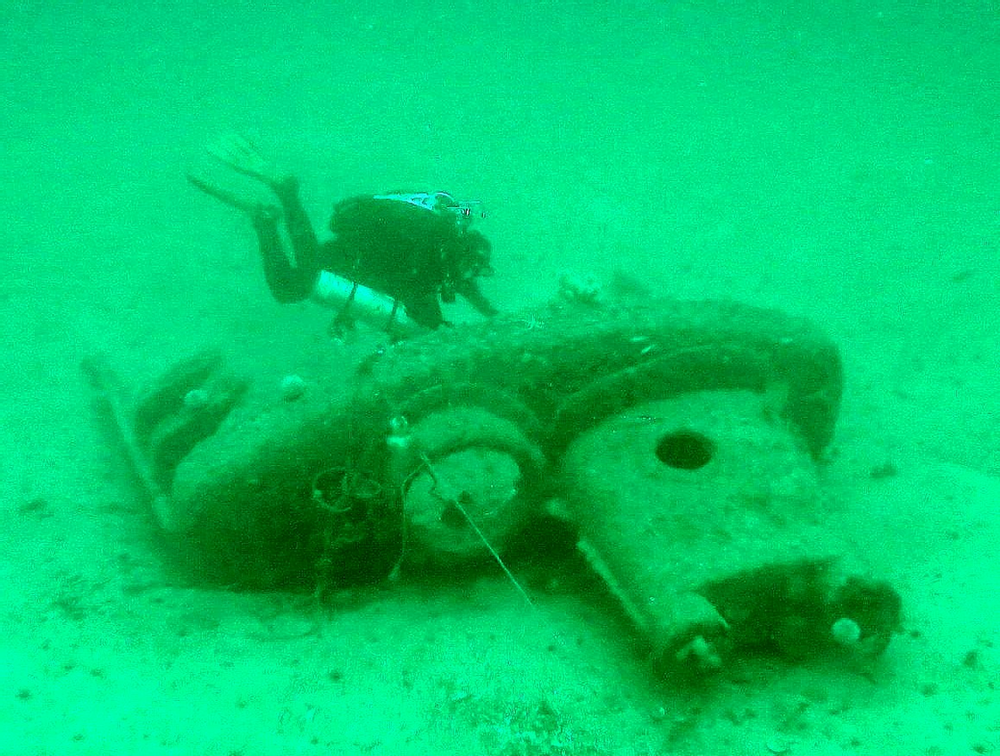
The SMS Markgraf is another Battleship and Jutland veteran she lies almost completely upside down in 45meters of water. Her twin rudders are one of the nicest parts of the wreck.
In preparation for my leading diver weekend, my buddies kindly agreed to stage some incidents for me on the boat. No sooner had we finished our post dive tea when Mark (Gaeity and Abbey Theatre fame) collapsed in the lounge, through a quick diagnosis we realised Mark had had a heart attack, two minutes of CPR and he was right as rain again. I honestly think he missed his calling as an actor. Next we had a “Broken Leg” from the twin tank crew but luckily the team were able to supply me with a set of 4 foot splints to help the casualty….
Lunch, then onto the U-Boat, the SMS UB-116. She was sunk very late in the war, just a week or two before the Armistice. As soon as she came into the sound she was detected, tracked and then and sunk by a remote-controlled mine. I believe this was the only submarine sunk by a remote-controlled mine during the war. The Royal Navy removed the remains of any sailors from her in the 1970 so they could destroy the live torpedoes on her. They over did it a wee bit and blew all the windows out of their surface boat. Though well broken up in 30m she was still a great dive with excellent viz. The Conning tower was my favourite section lying out on the sand. We were advised during our brief to look out for parts of Torpex explosive lying about the sea floor and not to touch it and sure enough we could see bright yellow blocks of it lying strewn around the wreck!
Another Incident back on the boat, Mark really outdid himself this time and he started with shock, then showed symptoms of Barotrauma. He went all out on the symptoms, and I won’t go into details but there was a LOT of drooling which afterwards we just put down to his age and nothing to do with his acting.
That evening we headed out for a walk around the outskirts of Stromness to look at the old WW2 defences. Refreshments in the only other hotel in Stromness before a swift exit then back to another watering hole.
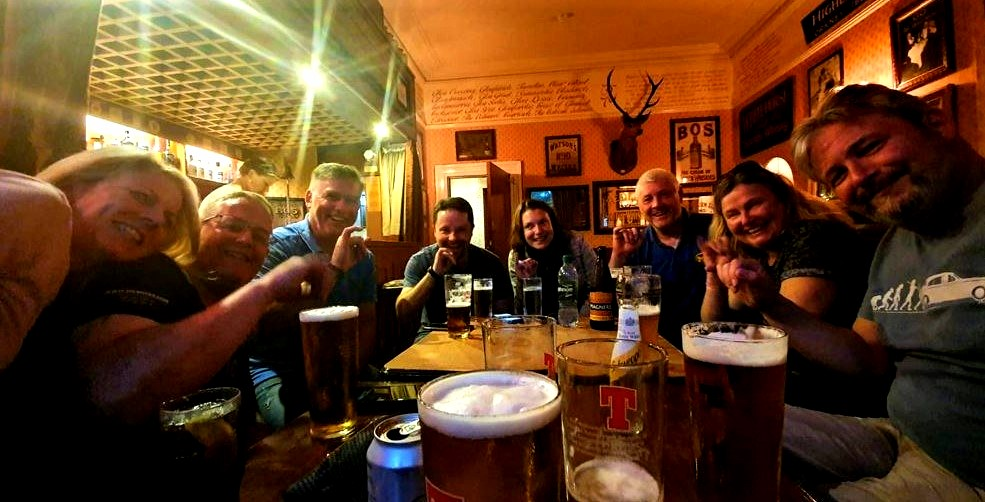
Day 5 – The last battleship
Breakfast and brief and today’s dives were going to be on the SMS Konig the last of the battleships in Scapa Flow and the torpedo destroyer the SMS V83. The SMS König was a formidable force in her day and was the leading ship in the German line at the Battle of Jutland in 1916. The SMS Konig was the most salvaged of the remaining battleships in Scapa Flow. Lying in 38 meters and one of the most interesting with the various Turbines on view in the salvage hole.
After Lunch we dived the V83. A motor torpedo boat, resting in just 10 meters. The ship was cut in half near the water line, but there is plenty left to see including one of her deck guns and a boiler just off the wreck.
Due to the depths of some of the wrecks at 44m we all had planned on running decompression dives so had completed our Advanced Nitrox course and some of the crew the Extended Range course. A practice run a week before (for some of us) in Portroe quarry, paid off nicely as we were much better prepared for the diving and the bulky equipment. For each dive the Valhalla crew (Vasco) made up our mixes and by the end of day 1 we were all very familiar with gas switching on our stage bottles and our computers so were ready for the week.
Day 6 & 7
On our last days diving we visited the SMS Cöln and SMS Dresden again. A lovely way to finish the weeks diving.
With the diving completed we had another Paddy the Chef, inspired dinners and then packed our cars for a 5 am start to make the ferry home. Once packed it was “refreshment time” for our last night out and for a change we headed to the Stromness Hotel! This time we occupied the Whisky room and put the world to rights once more.
Home Time! It’s a 5am start and back to the ferry for the 6:30 sailing, breakfast and a sleep on the ferry before the 7 ½ hour drive down the middle of Scotland again. We got the 7:30pm sailing from Cairnryan to Belfast arriving around 10pm. I dropped Colm back home around 12pm and finally got home to Wicklow and bed about 1am exhausted….
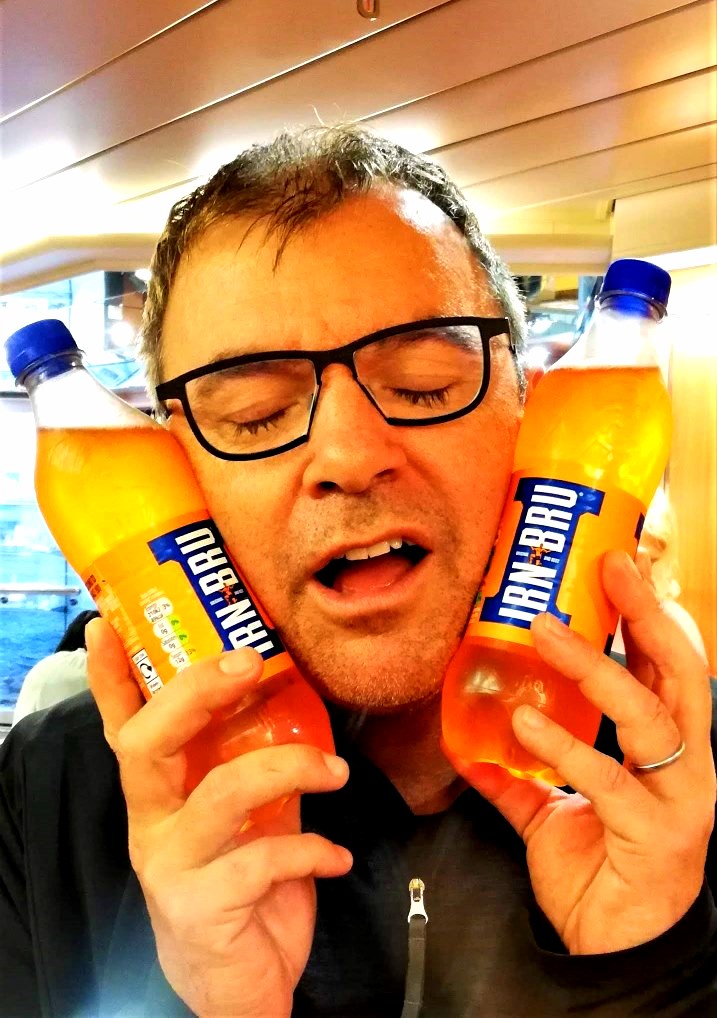
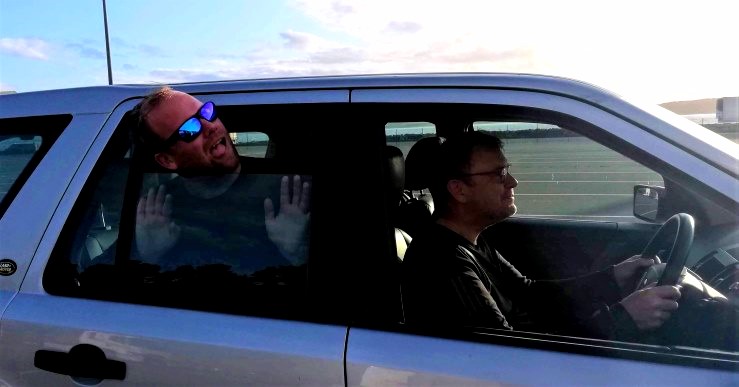
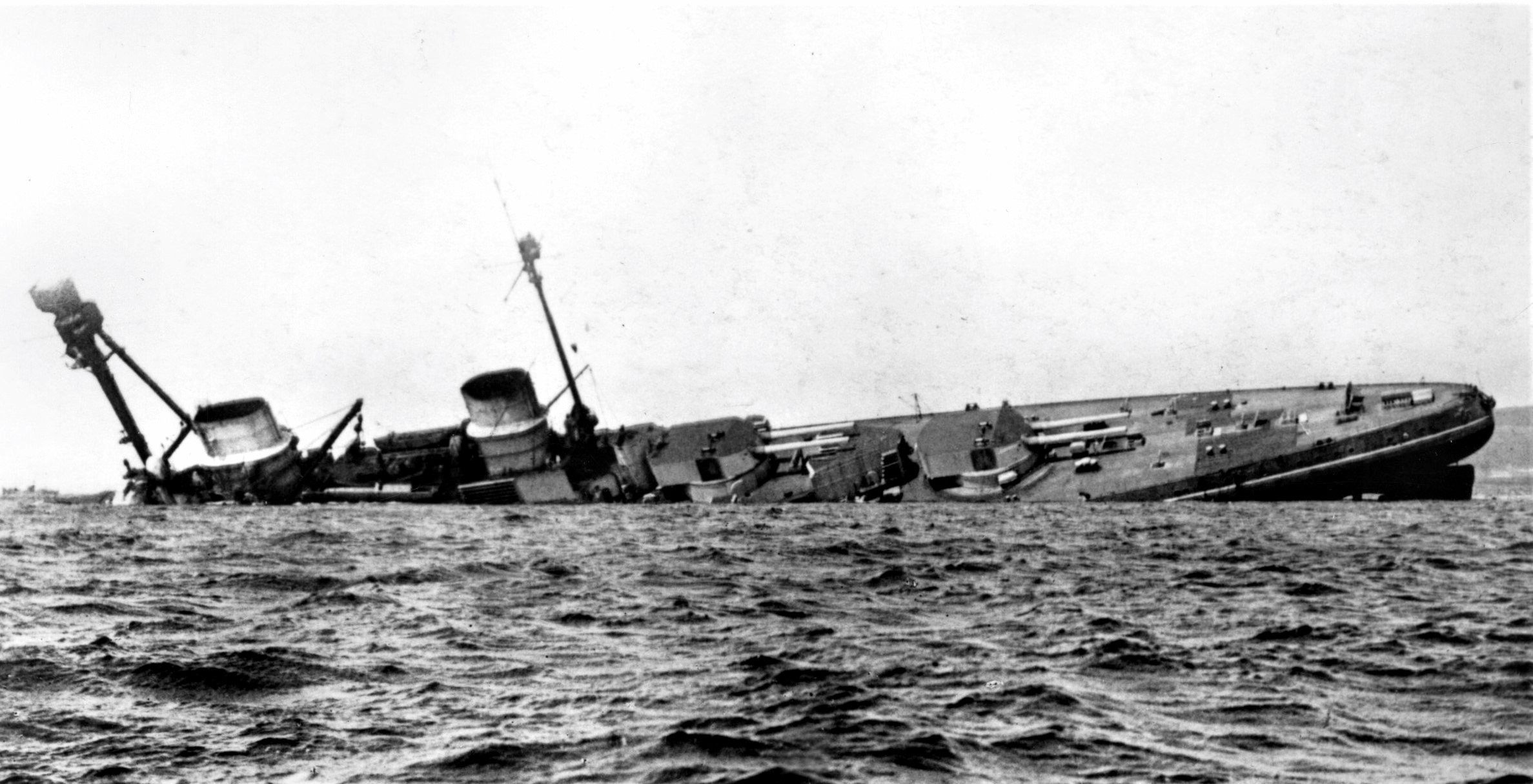
I really enjoyed the week, the diving was great, the craic as always was excellent and the company brilliant. Many thanks to everyone (Colm, Dave, Mark, Dan, Steve, Jean, Andy, Michelle, Colin and Laura) for all the help with lending gear towing trailers, arranging incidents and everything else that needed to be done. These trips only happen when everyone joins in and helps, and I could not ask for a better group.
Cheers,
Marty
